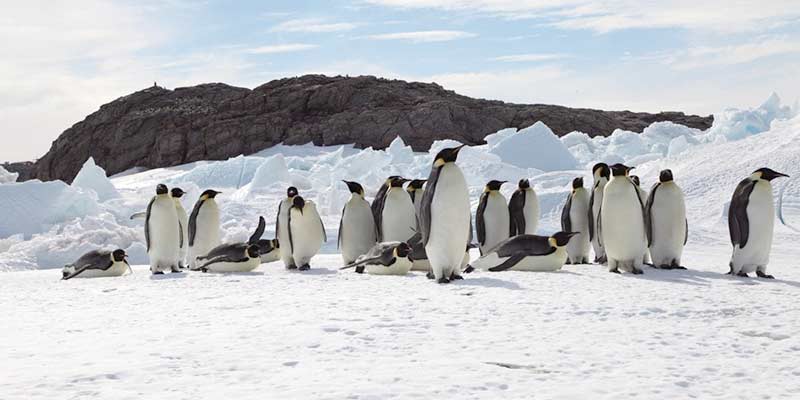- World
- Nov 09
Emperor penguins stare at bleak future
A warming climate may cause emperor penguins to go extinct by the end of this century, according to a study which cautions that a “business as usual” approach towards climate change could ensure the complete loss of the birds native to the Antarctic.
An international team of researchers, including those from Woods Hole Oceanographic Institution (WHOI) in the US, said that the emperor penguins - the tallest and heaviest of all species of penguins - are highly dependent on the fate of sea ice, which they use as a home base for breeding and molting. The present population of emperor penguins is estimated to be 595,000.
The study, published in the journal Global Change Biology, noted that if the Earth continues to heat up at the current rate, melting sea ice in Antarctica, the emperor penguins may experience an 86 per cent decline by 2100 - a point after which they are unlikely to bounce back to a healthier population.
How was the study conducted?
As part of the study, the researchers combined two existing computer models.
The first was a global climate model created by the National Center for Atmospheric Research (NCAR) in the US, which offered projections of where and when sea ice would form under different climate scenarios.
The second was a model of the penguin population that calculated how colonies might react to changes in that ice habitat, they said.
According to the study, the penguins build their colonies on ice with extremely specific conditions, requiring that it is locked in to the shoreline of the Antarctic continent. The ice should also be close enough to open seawater to give the birds access to food for themselves and their young, the researchers said.
With a warming climate this kind of sea ice will gradually disappear, robbing the birds of their habitat, food sources and ability to hatch chicks, the study said.
The penguin model has been in the works for more than a decade, the researchers said.
“It can give a very detailed account of how sea ice affects the life cycle of emperor penguins, their reproduction and their mortality. When we feed the results of the NCAR climate model into it, we can start to see how different global temperature targets may affect the emperor penguin population as a whole,” said study co-author Stephanie Jenouvrier, a seabird ecologist from WHOI.
‘Business as usual’ is harmful
The researchers ran the model on three different scenarios. One was a future where global average temperature increases by only 1.5 degrees Celsius - the goal set out by the Paris climate accord - and another where temperatures increase by 2 degrees Celsius.
The third simulation, the study said, predicted what might happen under a casual ‘business as usual’ approach in which no action is taken to reduce climate change - causing a temperature increase of 5 to 6 degrees Celsius.
Only 5 per cent of sea ice would be lost by 2100 under the 1.5 degrees Celsius scenario, causing the number of penguin colonies to drop by a fifth of its present day numbers.
If the planet warms by 2 degrees Celsius, the researchers cautioned, the loss of sea ice could nearly triple, and more than a third of existing colonies may disappear.
Jenouvrier said that the ‘business as usual’ scenario was even more dire, with an almost complete loss of the colonies ensured.
“Under that scenario, the penguins will effectively be marching towards extinction over the next century,” she said.
Manorama Yearbook app is now available on Google Play Store and iOS App Store

